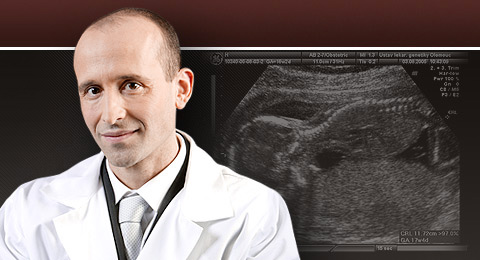Bohmová J., Vodička R., Ľubušký M., Studničková M., Holusková I., Vrtěl R., Kratochvílová R., Frydrychová M., Krejčiříková E., Filipová H., Stanovení RHD genotypu plodu z plazmy periferní krve těhotné ženy a posouzení citlivosti nových diagnostických postupů pro zavedení do klinické praxe. Čes. Gynek., 2013, 78 (1), s. 32-40. (RHD genotyping from cell-free fetal DNA circulating in pregnant women peripheral blood and sensitivity assessment of innovated diagnostic approaches for introduction into the clinical practice)
ABSTRACT
Objective: Introduction of fetal RHD genotyping from cell-free fetal DNA circulating in the peripheral blood of pregnant women to clinical practice. Sensitivity assessment of innovated method using range of dilution series and internal control of amplification.
Design: Procedure creating of noninvasive determination of fetal RHD genotyping from blood plasma of pregnant women. Detection of limit of minority representation RHD+/- sample in the RHD-/- sample.
Setting: University Hospital Olomouc, Institute of Medical Genetics and Fetal Medicine, Clinic of Obstetrics and Gynecology, Transfusion Department.
Methods: 1. TaqMan Real-Time PCR without an internal amplification controls. 2. Optimization and calibration of RHD genotyping using RHD multiplex by TaqMan Real-Time PCR with an internal amplification control and by minisequencing (Snapshot – multiplex) with an internal amplification controls.
Results: 1. RHD positive or negative fetuses were determined by amplification curves from Real-Time PCR system that matches the parameters for the evaluation of the output data using series of amplification and contamination parallel controls. 2. TaqMan based Real-Time PCR and minisequencing (SNaPshot) based quantification were able to detect 0.22% of artificial RHD+/- sample diluted in RHD-/- sample. In addition, SNaPshot assay is suitable for heterozygozity and homozygozity recognition.
Conclusion: Current established and routinely used procedure is based on the detection of exon 7 of the RHD gene and on the series of parallel amplification and contamination controls. Both newly developed methods could be, after validation of the larger set of control samples, introduced into clinical practice.
KEYWORDS RHD genotyping – cell-free fetal DNA – maternal plasma – TaqMan Real-Time PCR – SNaPshot – minisequencing


Contact
Professor Marek Lubusky, MD, PhD, MHA
THE FETAL MEDICINE CENTRE
Department of Obstetrics and Gynecology
Palacky University Olomouc, Faculty of Medicine and Dentistry
University Hospital Olomouc
Zdravotníků 248/7, 779 00 Olomouc, Czech Republic
Tel: +420 585 852 785
Mobil: +420 606 220 644
E-mail: marek@lubusky.com
Web: www.lubusky.com


